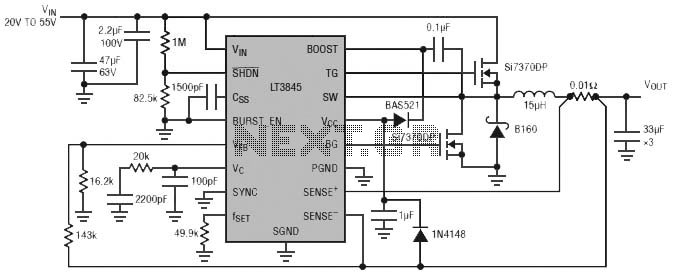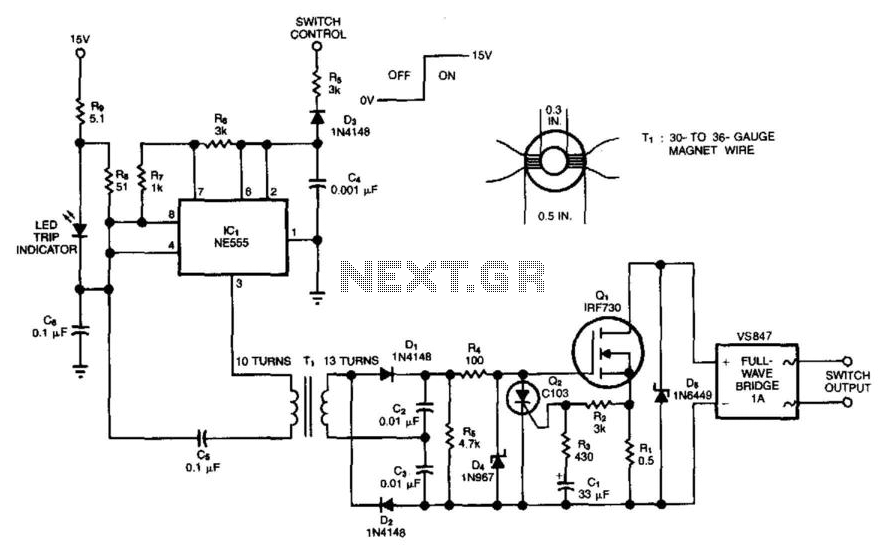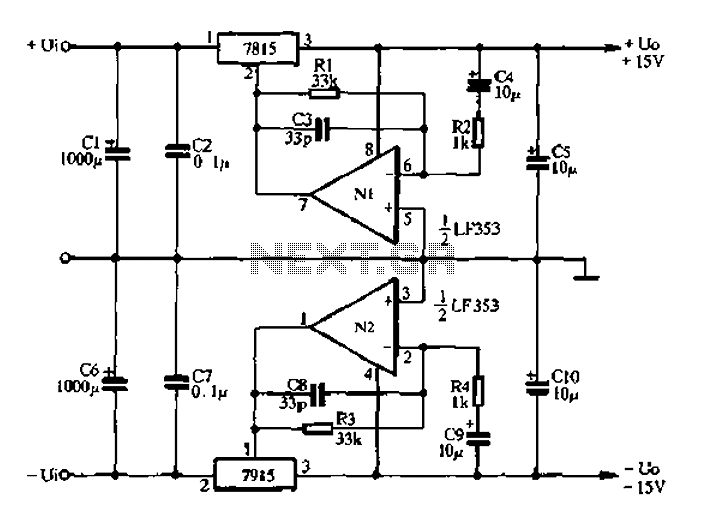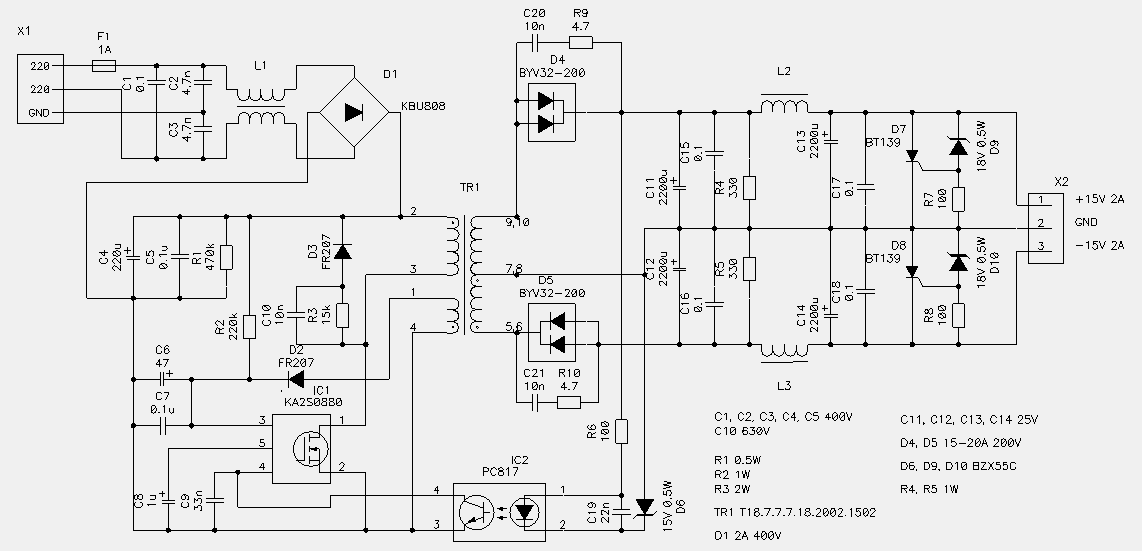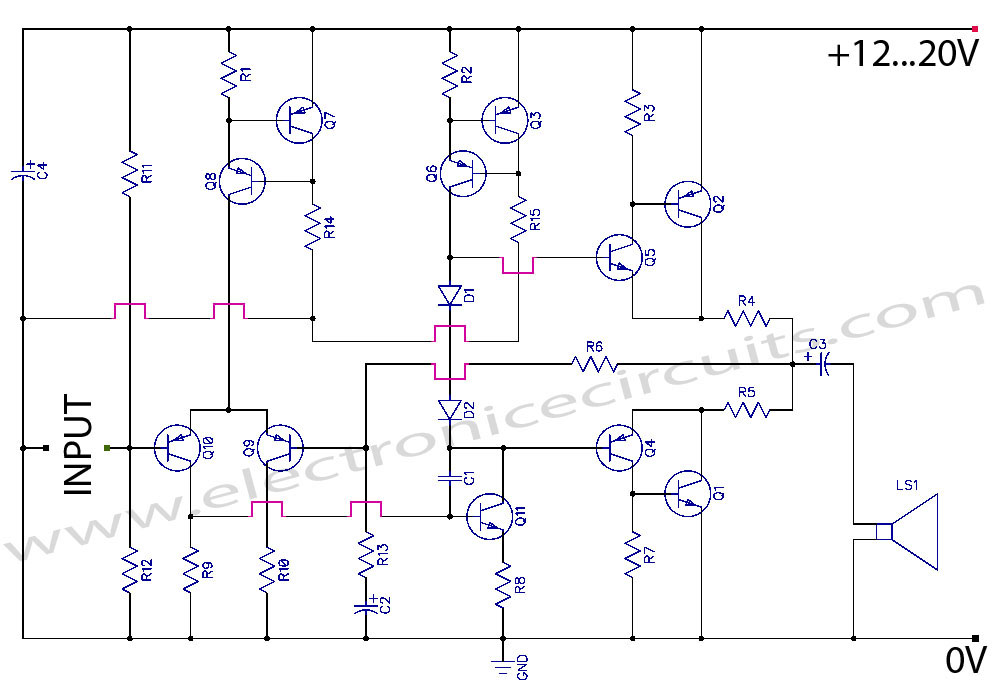
Power Supply 0-30V / 0-2A
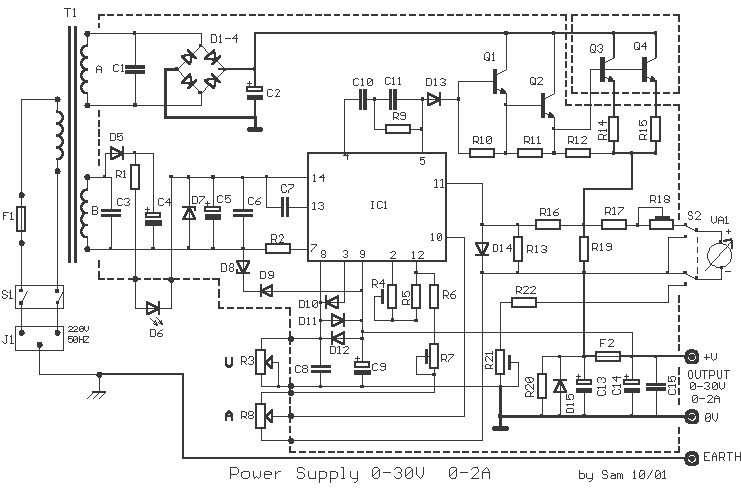
The basic requirements for a laboratory power supply are to provide the necessary voltages and currents with low output resistance, low noise, minimal ripple, and good stabilization. These requirements are addressed within the circuit design. Many power supplies incorporate electronic safety features that protect against damage in the event of a short circuit at the output. The circuit allows for regulation of the maximum output current, adjustable from 0 to 2A, and can handle loads that demand higher current levels.
A laboratory power supply typically consists of several key components: a transformer, rectifier, filter, voltage regulator, and protection circuitry. The transformer steps down the input AC voltage to a lower AC voltage suitable for the desired output. The rectifier, often a bridge rectifier configuration, converts the AC voltage to pulsating DC voltage. This pulsating DC is then smoothed by the filter stage, which may include capacitors and inductors to reduce ripple voltage and noise, ensuring a stable output.
The voltage regulator is crucial for maintaining a constant output voltage despite variations in load and input voltage. It can be implemented using linear regulators for low-noise applications or switch-mode power supply (SMPS) techniques for higher efficiency. The choice of regulator will depend on the specific requirements of the application, including the need for low dropout voltage and thermal performance.
Incorporating electronic safety features is essential for protecting the power supply and connected devices. These features may include current limiting, thermal shutdown, and over-voltage protection. Current limiting ensures that the output current does not exceed a predetermined level, preventing damage from overload conditions. Thermal shutdown protects the unit from overheating by disabling the output if the temperature exceeds safe operating limits.
The adjustable output current feature allows users to set the maximum current limit according to the needs of the connected load, providing flexibility for various experimental setups. This capability is particularly useful in laboratory environments where different devices may require different current levels.
Overall, a well-designed laboratory power supply meets the demanding requirements of precision, stability, and safety, making it an indispensable tool for electronics testing and development.The basic requirements than one laboratory power supply, it is to provide voltages and currents of operation that need the usual units, to have low output resistance, low noise, small ripple and good stabilization. The above requirements are covered, from the circuit. Many power supply allocate electronic safety that him protects from destruction, when short their exit.
In the circuit it can be regulated the superior price of output current, in a any price from 0 until 2A and him exceed, even if the load need has bigger requirements. 🔗 External reference
A laboratory power supply typically consists of several key components: a transformer, rectifier, filter, voltage regulator, and protection circuitry. The transformer steps down the input AC voltage to a lower AC voltage suitable for the desired output. The rectifier, often a bridge rectifier configuration, converts the AC voltage to pulsating DC voltage. This pulsating DC is then smoothed by the filter stage, which may include capacitors and inductors to reduce ripple voltage and noise, ensuring a stable output.
The voltage regulator is crucial for maintaining a constant output voltage despite variations in load and input voltage. It can be implemented using linear regulators for low-noise applications or switch-mode power supply (SMPS) techniques for higher efficiency. The choice of regulator will depend on the specific requirements of the application, including the need for low dropout voltage and thermal performance.
Incorporating electronic safety features is essential for protecting the power supply and connected devices. These features may include current limiting, thermal shutdown, and over-voltage protection. Current limiting ensures that the output current does not exceed a predetermined level, preventing damage from overload conditions. Thermal shutdown protects the unit from overheating by disabling the output if the temperature exceeds safe operating limits.
The adjustable output current feature allows users to set the maximum current limit according to the needs of the connected load, providing flexibility for various experimental setups. This capability is particularly useful in laboratory environments where different devices may require different current levels.
Overall, a well-designed laboratory power supply meets the demanding requirements of precision, stability, and safety, making it an indispensable tool for electronics testing and development.The basic requirements than one laboratory power supply, it is to provide voltages and currents of operation that need the usual units, to have low output resistance, low noise, small ripple and good stabilization. The above requirements are covered, from the circuit. Many power supply allocate electronic safety that him protects from destruction, when short their exit.
In the circuit it can be regulated the superior price of output current, in a any price from 0 until 2A and him exceed, even if the load need has bigger requirements. 🔗 External reference
